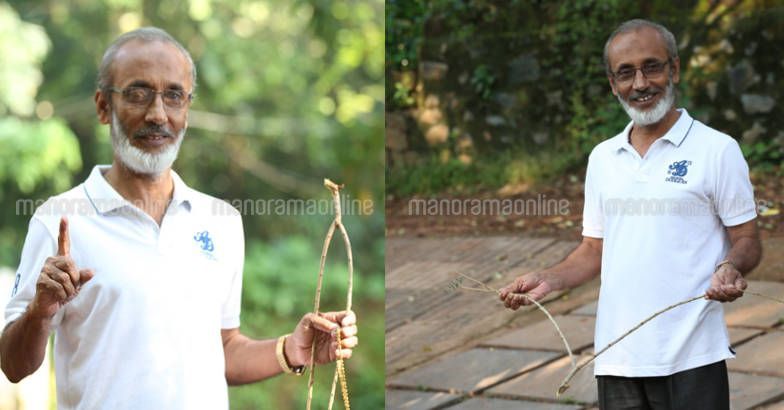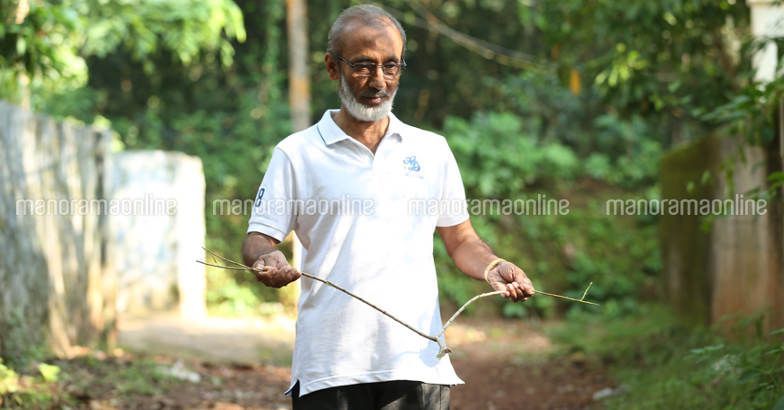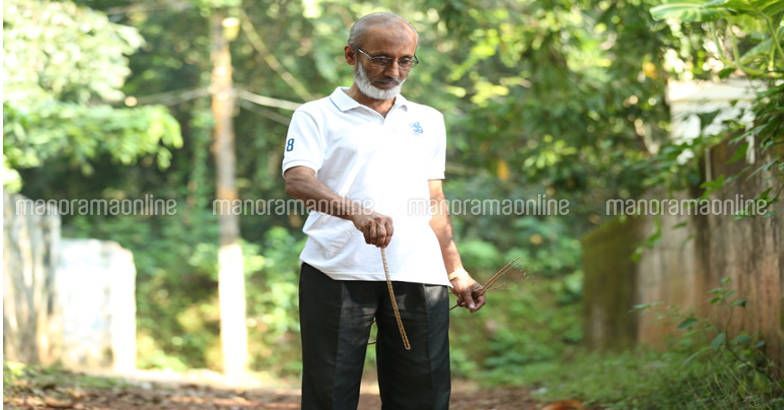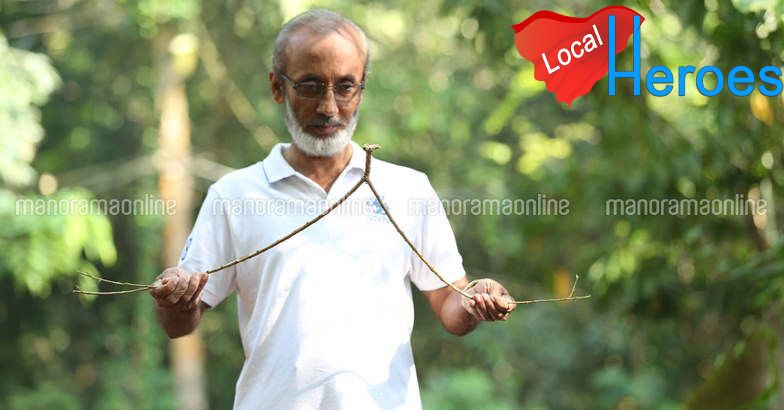At first glance, Abdul Shukoor could be mistaken for a mystic. After all, he can locate the pulse of groundwater with just a crooked twig!
Shukoor, however, laughed away the suggestion. “There is nothing superhuman about this. I am just following the signs of nature,” said the man who has successfully suggested locations for hundreds of wells across Kerala.
Shukkoor, who retired as a circulation manager for a Malabar-based daily, mastered the art from his father, Muhammed Abdu Saleh Maulavi. The Maulavi, who served as the principal of the Rausathul Ulum Arabic College at Farook, has written a Malayalam book on locating groundwater.

Shukkoor, who lives in the Farook College area near Kozhikode, said that he used to accompany his father on his water-detection trips across the countryside for almost a decade.
Shukkoor and his father bring to mind the legendary nature watchers who could tell by ordinary signs the presence of underwater and suggest a suitable place to dig a well. Shukkoor said that he had identified locations for more than thousand wells in over 30 years of his work.
He said that he could tell the presence of underground water by looking at the form of the trees and the incline of the land. Branches of certain trees such as amla vibrate when they are held over a place with a store of groundwater beneath it, he said. “Of course, it takes a practiced hand to detect the slight vibration,” he said.
Shukkoor picked out a fork-shaped amla branch and held it like a sextant with both hands. All he has to do is to criss-cross the land where the well is supposed to be dug and wait for the branch to vibrate, he said.

He said that people with a particular blood group have a greater chance of detecting the movement. “There is nothing superhuman in detecting the presence of groundwater. Some people just create a shroud of mystery to trick people into paying them,” he said.
He said that a gold chain was as effective as the tree branch in detecting the presence of water.
The presence of certain trees such as parakam, pala, kallippala, nelli, pullani, ilanji, certain varieties of palm and bamboo in general suggested the presence of water beneath. The presence of steam or dewdrops were other signs.
Hollow sounds on hillocks also suggested water. If you spot green shoots even in scorching summer, rest assured that you are standing on top of abundant water, he said.
Patches of green grass in arid terrains and a thorny tree amid other trees were also signs of groundwater. A palm with just two branches, resinous trees and coconut trees also indicate groundwater.
Another sign is the branch of a jackfruit tree that grows parallel to the ground. Trees such as Samudrapacha, Ezhaches, Nagamaram, Sthalapadmam, Kadambu, Ungu and Thannimaram grown in places with abundant groundwater beneath.

Shukkoor said that many of the superstitions could be explained by the presence of groundwater. “Some people say that their bedrooms are haunted. If the bedroom is located over a good source of groundwater, you are likely to feel restless. Some people mistake this for supernatural activity,” he said. Shukkoor is also sought out by people to want him to identify locations to build houses for them.
“It is not advisable to sleep over flowing groundwater. The main door of the house should not face the gate directly. You should not get down from the house directly to a depth. Most of the streams on the land would have corresponding underground currents,” he added.
Read more: Latest in Society

























